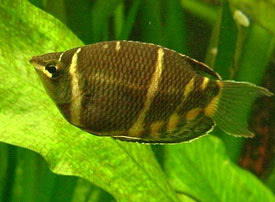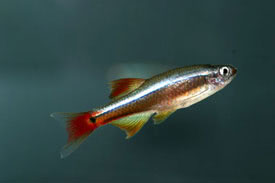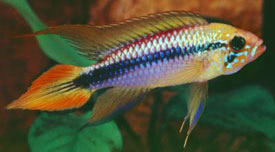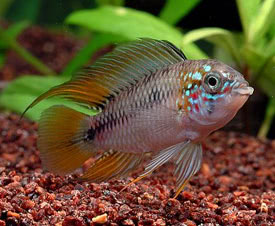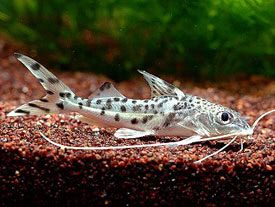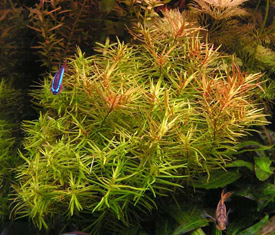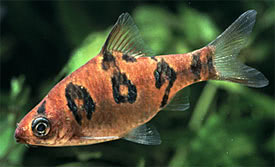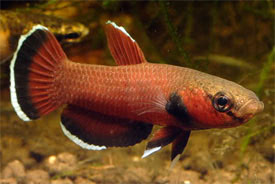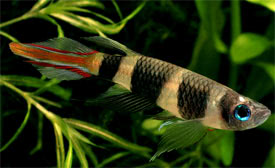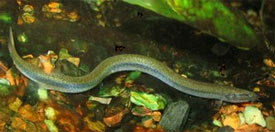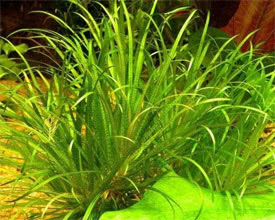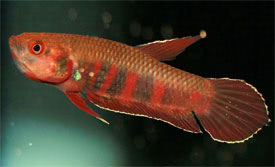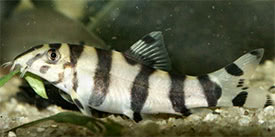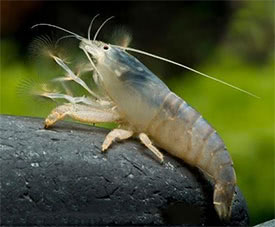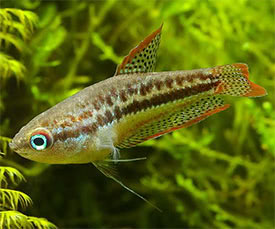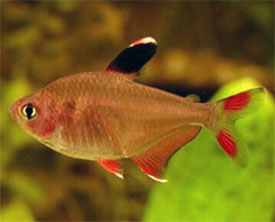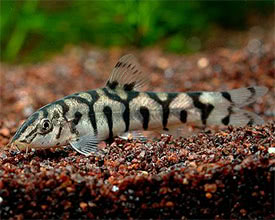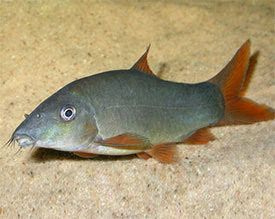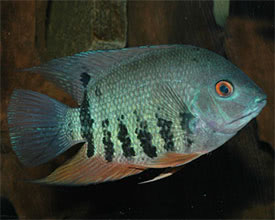
 Magyarul / Hungarian
Magyarul / Hungarian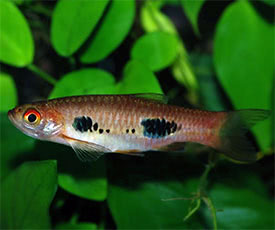

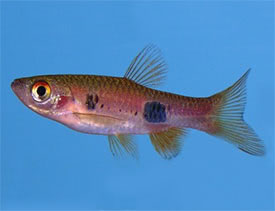

- Scientific name: Rasbora kalochroma
- Synonyms: Leuciscus kalochroma (Bleeker, 1851)
- Common name: Clown Rasbora
- Group: Cyprinids
- Habitat: Asia; native to Peninsular Malaysia and the Greater Sunda Islands of Borneo and Sumatra.
- Size: 10 cm
- Biotope: Found in blackwater forest streams and rivers associated with peat swamps where the water is stained brown because of decaying plant matter.
- Social behavior: A very peaceful and active schooling fish, that can be a good choice for a community tank. It is important to keep them in a larger group, as they become less nervous, and the males will also display their most dazzling colors when they compete with each other.
- Diet: Omnivorous; in nature they eat aquatic and terrestrial invertebrates. They aren’t choosy eaters in the aquarium, they will accept live, frozen and dried foods too.
- Breeding: Quite hard
- Tank: Minimum 150 litres
- Population: 8-10 fish for 250 litres
- Decoration: They look best in a densely planted tank with some driftwood branches or roots. Use dark substrate with some larger rocks. Place a handful of dried leaves into the tank that can stain the water a little. Use dim lighting or use floating plants. Cover their tank as they are good jumpers.
- Temperature: 23-28 °C
- pH: 5-7.5
- Hardness: 2-10 NK°
- Lifespan: 3-5 years
Description: Clown Rasboras can have variable patterning that depends on their locality. They have 2 larger, dark blotches on their body, the first is behind the gill cover, and the other is on the middle area of the flank between the dorsal fin and the anal fin. Some forms of Rasbora kalochroma have a line of spot-like markings connecting the two dark blotches on their body. Juveniles can resemble to Boraras maculatus, while the adult fish have similar patteren as Rasbora elegans, however they can be easily identified as the latter have overall silvery body, while Clown Rasbora have pinkish or reddish coloration. The only congender that sometimes can be confused with Clown Rasbora is the Rasbora kottelati which is only found in northern Borneo, and it possesses an additional, oval-shaped dark blotch on the caudal peduncle. When kept in a too small group aggression between males are far more likely to arise. Their natural habitats are under threat from rubber and palm oil plantations, and other human activities.
Mature females are a little larger and plumper than males. Like many small cyprinids, Clown Rasbora is an egg-scatterer continuous spawner, with no parental care. Well-fed fish will usually spawn, and it is possible that a small numbers of fry will survive in a densely planted community tank, but when you would like to maximize their numbers, they should be bred in a separate tank. A shallow 70 litres tank, that filled half with water is ideal. Lighting is not necessary, and cover the base of the tank with some kind of mesh or use a few clumps of fine-leaved aquatic plants that can protect the eggs and the fry from the adults. Use slightly acidic water with a temperature of 27-28 °C. They can be bred in pairs, and the spawning can be initiated by filling up their tank with small ammounts of cooler water, and feeding the fish with small portions of live foods. After spawning the adults should be removed, as they will eat the eggs and fry. Incubation is temperature-dependant and the eggs usually hatch within 18-48 hours, and the fry become free-swimming after another 1-2 days. Initial food should be very small live foods.







